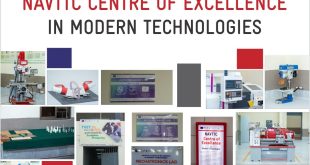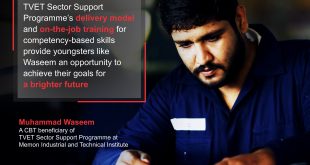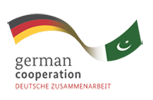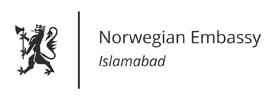The Gilgit-Baltistan region of Pakistan not only offers painterly landscapes, a kaleidoscope of cultures and a deeply generous people, it also possesses a hidden wealth under its soil in the form of gemstones – only a negligible percentage of which has so far been tapped. According to a study commissioned by the Planning and Development Division of the government of Pakistan in 2006, Gilgit-Baltistan is abundantly supplied with deposits of aquamarine (in Gilgit, Skardu and Hunza), ruby (in Ishkomen and Hunza), tourmaline (found in Stak Nallah in Haramosh valley in Gilgit), among many others. Pakistan’s reserves of precious and semi-precious gemstones are among the 10 largest in the world. Unfortunately, the country’s share in their trade is less than US$50.0 million per year.
The Rupani Foundation (RF), in partnership with the Aga Khan Rural Support Programme (AKRSP), in 2007 started investing in this sector by offering lapidary training to mountain communities. Initially, skills were imparted in gems cutting and polishing to the trainees.
RF has set up 4 centres in Gilgit, Gahkuch, Immit and Hunza-Nagar offering training to the youth (with females in particular encouraged to apply). Sessions are conducted after every six months to benefit promote sustainability in the region by imparting income-generating skills.

To further improve the quality of the skills of the trainees and basic trained workers, RF went into cooperation with the TVET Reform Support Programme, co-funded by the European Union (EU), the Royal Embassy of Netherlands and the Federal Republic of Germany, and implemented by the German development agency, GIZ.
For this special course, RF engaged the services of expert Mr. Alwis, who has flown in especially from Sri Lanka to supplement the training. His addition has proven to be very productive, with the students enthusiastically praising the helpfulness of his superior skills and knowhow.
 Miss Nilofer (trained in faceting at the Gahkuch centre) said that Mr. Alwis helped them overcome the minor and often overlooked errors that they had unconsciously been committing while faceting. “I enjoy working here and want the maximum sale of my products,” she says, displaying some of her wares.
Miss Nilofer (trained in faceting at the Gahkuch centre) said that Mr. Alwis helped them overcome the minor and often overlooked errors that they had unconsciously been committing while faceting. “I enjoy working here and want the maximum sale of my products,” she says, displaying some of her wares.
“I am very passionate about my work but so far, my investment has not reaped the reward I deserve.” Miss Nilofer explains that she earns Rs. 7,500 per month which was not enough for her and her family to make ends meet.
“I spend Rs. 110 on van fare daily and Rs. 30 at lunch and my entire earnings drain down in this way and at the end of the month I am left with hardly any money to support my family (which consists of 11 members),” she says.
Nonetheless, Miss Nilofer maintains that she is committed to the training and is confident that it will help her chances in the future.
In the same centre is Miss Haleema, who is also being trained in faceting. “I come down and go uphill daily,” she says of her three-hour journey from home in a nearby hill town to the center and back. “It is exhausting. But I would not have learned this craft if I didn’t endure the hardship.”
Haleema is very optimistic about this enhancement of her skills. She says, “I am professionally trained and capable of making high-quality products that will be in demand locally and internationally.”
 In the Nagar lapidary unit the trainees (in tumbling & polishing) were all female, and very committed ones at that. Shama from Sumayer Valley in Nagar, the sole breadwinner for her family of four, says she earns Rs. 4,000 a month which is not enough to meet her household expenditures. “I have the potential to earn Rs. 15,000 once my products get access to the market,” she says, pointing to her own lapidated products.
In the Nagar lapidary unit the trainees (in tumbling & polishing) were all female, and very committed ones at that. Shama from Sumayer Valley in Nagar, the sole breadwinner for her family of four, says she earns Rs. 4,000 a month which is not enough to meet her household expenditures. “I have the potential to earn Rs. 15,000 once my products get access to the market,” she says, pointing to her own lapidated products.
Recently, there has been a decline in lapis demand from China (formerly a major market for the stone), due to which other options have been explored.
According to Mr. Majeedullah, the project officer, RF has been actively pursuing linkages with domestic and international markets for the sale of local products that would give a much-needed boost to the income level of the region’s skilled workers. “Gemstone exploration in Gilgit-Baltistan is a recent phenomena,” he elaborates. “The fine-tuning of gemstones to make them meet international standards was a big challenge for us, as, in most cases, we have been getting third generation products. Despite working with these third-rate gemstones, our trained professionals demonstrated a superior caliber of workmanship and created state-of-the-art products last year and we successfully sent two consignments to Japan.”
While RF has instigated a change in the right direction, there is still great room for improvement. Mr. Majeedullah says that stakeholders – the government in particular – need to come on board and carry out an extensive mapping and exploration of the region with regard to gemstones. Furthermore, the basic infrastructure necessary for the grooming of the industry needs to be developed, such as a gemstone authentication lab and an auction center. Miners need to be provided with advance-level machinery and training to avoid the breakage of the delicate gems. In short, the entire chain of business, from mining to supplying to cutting to polishing and finally marketing – needs to be revamped. It might seem like a Herculean task, but going by the findings of the current RF project, the results can be life-changing for the most deserving.
 Pakistan TVET REFORM Support Programme Technical and Vocational Education and Training (TVET) Reform support Programme
Pakistan TVET REFORM Support Programme Technical and Vocational Education and Training (TVET) Reform support Programme









